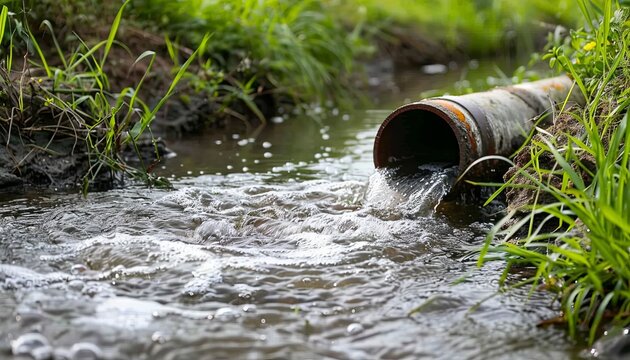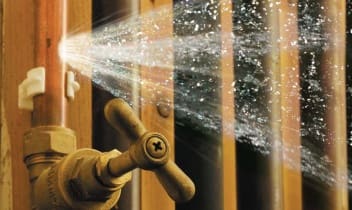Signs of a Burst Pipe: How to Identify and Address the Issue Before It Escalates
Signs of a Burst Pipe: How to Identify and Address the Issue Before It Escalates
Blog Article
Preventing Burst Water Lines: Essential Tips to Protect Your Pipes
Stopping ruptured pipelines is a vital worry for homeowners, especially throughout colder months when the threat of cold is enhanced. Executing critical measures such as appropriate insulation, regular examinations, and maintaining consistent indoor temperatures can substantially lower the probability of pipeline failing.
Understand Pipe Vulnerabilities
Understanding pipe vulnerabilities is important for efficient plumbing maintenance and avoiding expensive damage. Several elements add to the susceptibility of pipes to bursts, including material make-up, age, and ecological problems. Older pipelines, specifically those made from galvanized steel or polybutylene, usually break down with time, bring about boosted risk of leaks and ruptures.
Temperature variations can additionally dramatically impact pipeline stability. In cooler climates, water caught in pipelines can freeze, expanding and exerting pressure on the pipeline walls, which may inevitably cause a burst. Moreover, high water stress can strain pipelines, especially at joints and bends, enhancing the chance of failure.

Insulate Water Lines Effectively
Correct insulation of pipes is essential for stopping cold and succeeding ruptureds throughout cold weather (burst pipe). Protecting your plumbing system efficiently safeguards against temperature drops that can result in expensive damage. Begin by determining prone locations where pipelines are exposed to exterior temperatures, such as basements, attics, and exterior wall surfaces
Usage foam pipeline insulation sleeves or cover insulation tape around these areas to offer a protective barrier. Ensure that all sections of the pipelines, specifically those with restricted warm exposure, receive adequate insulation. Pay unique interest to joints and fittings, as these are extra at risk to freezing.
When insulating, it's necessary to choose products that satisfy regional building codes and are ideal for the details atmosphere. Fiberglass insulation is usually advised for its thermal resistance residential properties. Additionally, consider utilizing heat wires or tape in extreme problems, which can be plugged in to provide extra heat
Regularly check insulated pipelines for any indications of wear or damages, as jeopardized insulation can diminish its efficiency. By taking these aggressive procedures, you significantly minimize the risk of pipeline ruptureds, ensuring a reliable pipes system throughout the winter season months.
Maintain Regular Temperature Level
A stable indoor temperature level is important for avoiding burst pipes throughout the cold months. When temperature levels decline, water within pipelines can ice up, creating and expanding stress that might eventually trigger the pipes to ruptured. To alleviate this danger, property owners should keep a regular temperature level throughout their living area, ideally no less than 55 ° F(13 ° C)Making use of a programmable thermostat can assist handle indoor temperature levels successfully, guaranteeing that rooms with plumbing continue to be warm even when the residence is vacant. Pay special focus to areas that are more at risk to chilly, such as basements, garages, and attic rooms. Maintaining closet doors open under sinks can likewise allow warmer air from the home to distribute around plumbing.
Additionally, it is prudent to enable taps to trickle slightly during severe cold snaps. This minor flow of water can stop cold by alleviating pressure within the pipes. In addition, throughout particularly serious weather condition occasions, take into consideration temporarily suspending any type of nighttime obstacles on your thermostat to keep a steady warm setting. By applying these strategies, property owners can considerably decrease the danger of pipe bursts and safeguard their pipes systems versus the extreme wintertime aspects.
Regularly Evaluate Plumbing
Normal inspections of pipes systems are essential for protecting against burst pipes and keeping overall home stability. Throughout these inspections, it is necessary to examine visible pipelines for indicators of corrosion, leaks, or use.
In addition, examining joints and links is vital, as these points are commonly at risk to leaks. Property owners must additionally assess water pressure levels, as excessive pressure can strain the plumbing system and boost the threat of pipeline ruptureds.
Take into consideration scheduling professional plumbing inspections at the very least when a year, particularly before wintertime, to guarantee your system is planned for cooler temperature levels. Normal inspections not only aid in recognizing instant concerns however likewise foster long-lasting maintenance techniques that can enhance the lifespan of your plumbing system. By being aggressive in your strategy, you can guard your home versus the turbulent and expensive effects of ruptured pipes. Prioritizing pipes examinations is a financial investment in your house's health and wellness.
Know Emergency Treatments
Recognizing emergency situation procedures is important for every home owner, especially after conducting routine pipes examinations. Being prepared for a pipes emergency situation can considerably reduce damages and conserve expenses.
Following, maintain crucial devices handy. A plumbing emergency kit ought to include a wrench, bettor, and towels, along with a flashlight and a pail for tiny leakages. In addition, consider having the contact information for a trusted plumber readily available, should the situation escalate past your control.
If you detect a leak or burst pipeline, immediately shut Get More Info off the water and alert your plumbing professional. Record the damages with pictures for insurance policy objectives. Recognize the indicators of potential pipes problems, such as uncommon water pressure variations or damp areas on walls
Eventually, aggressive understanding and quick action are essential in handling pipes emergencies, ensuring your home continues to be protected and lessening prospective damages.

Conclusion
In verdict, protecting against ruptured pipelines requires a complex approach that consists of understanding pipeline vulnerabilities, correct insulation, preserving regular interior temperatures, normal inspections, pop over to these guys and knowledge of emergency treatments. By applying these crucial strategies, the risk of plumbing failings can be significantly decreased, thus making certain the longevity and performance of the plumbing system. Aggressive steps not just secure against possible damages yet additionally add to overall water conservation and the defense of residential or commercial property.
In chillier environments, water entraped in pipes can freeze, applying and expanding pressure on the pipeline walls, which may ultimately lead to a burst. When temperatures drop, water within pipelines can ice up, developing and increasing stress that might ultimately create the pipelines to ruptured. By applying these methods, house owners can substantially minimize the risk of pipe bursts and protect their pipes systems versus the harsh winter elements.

Report this page